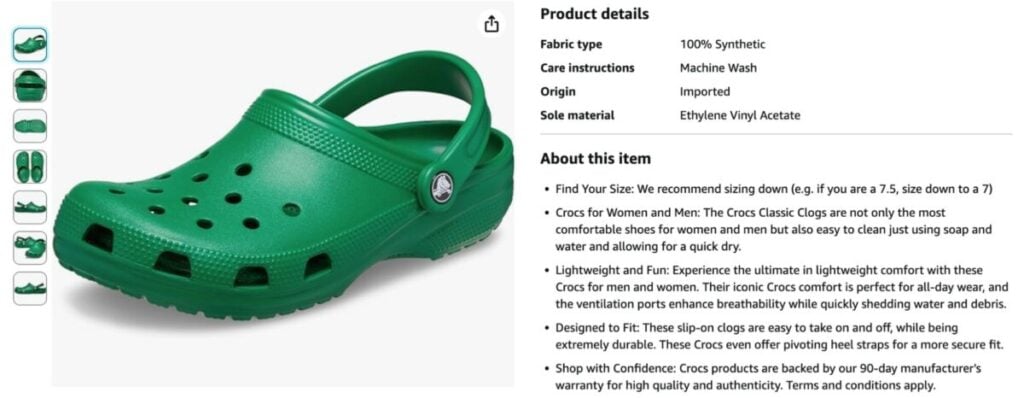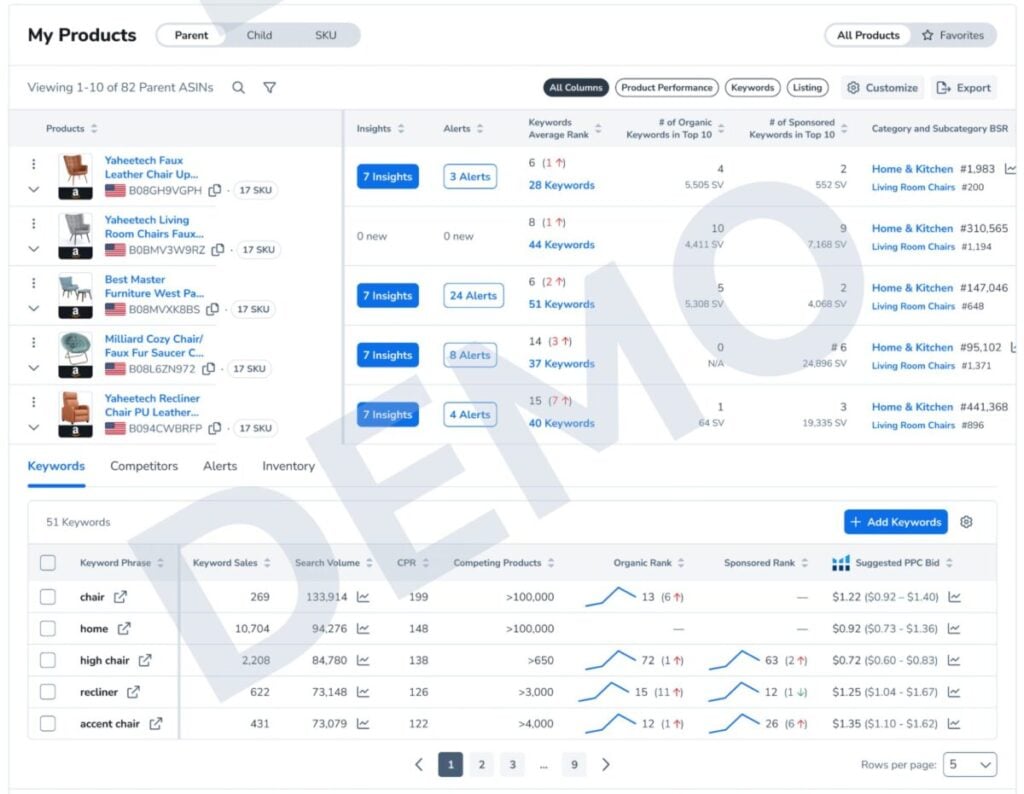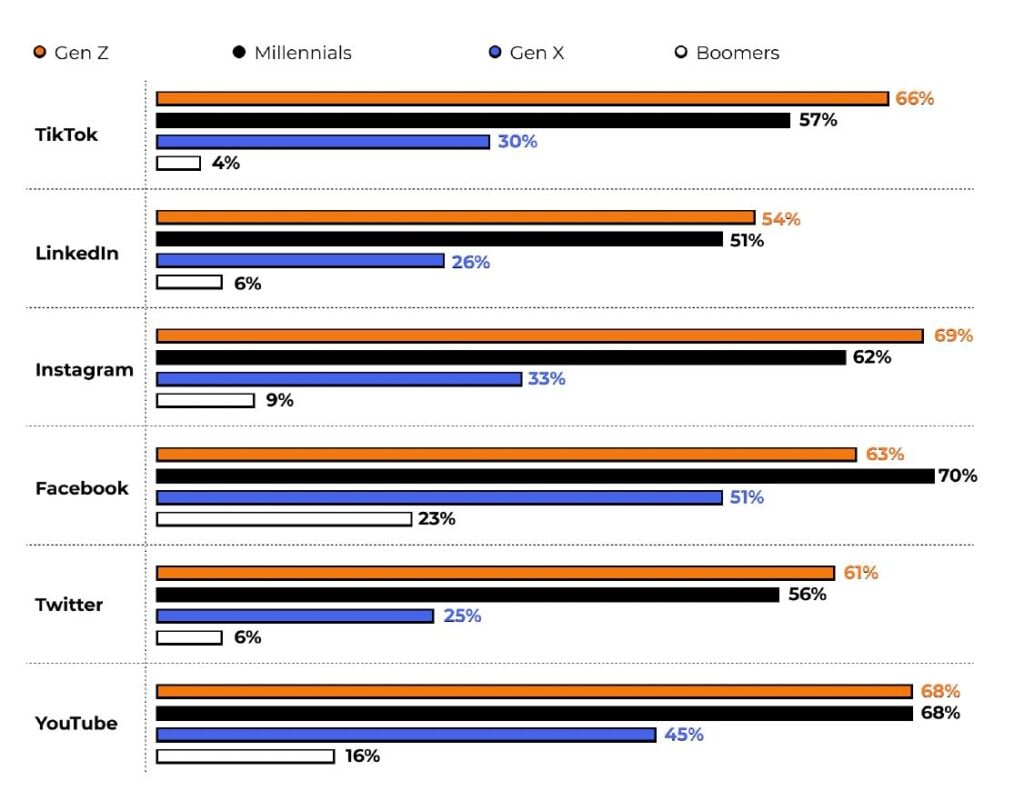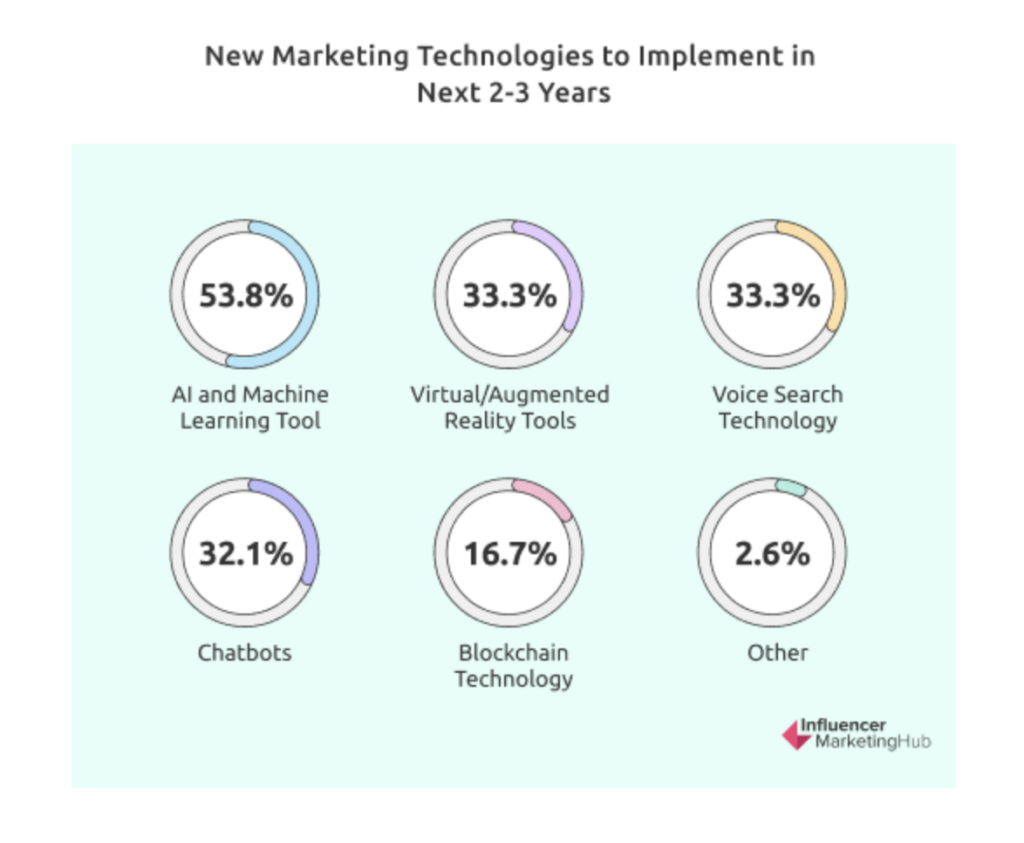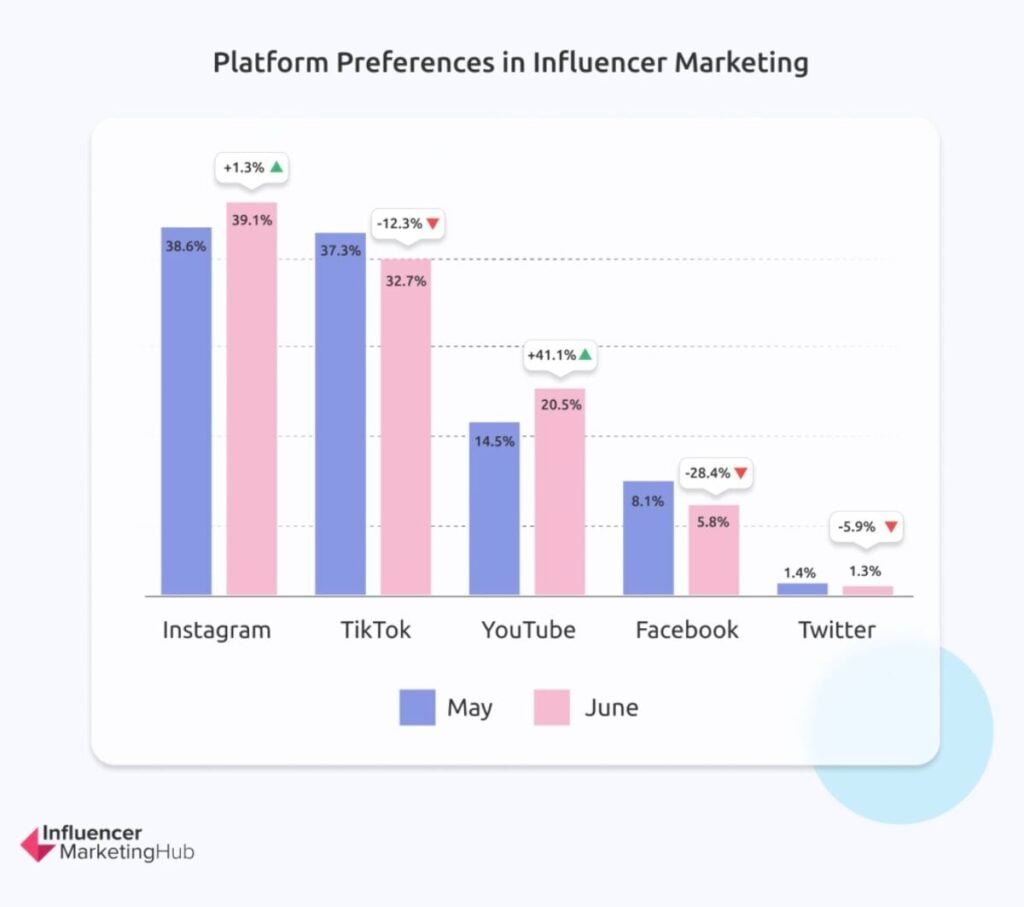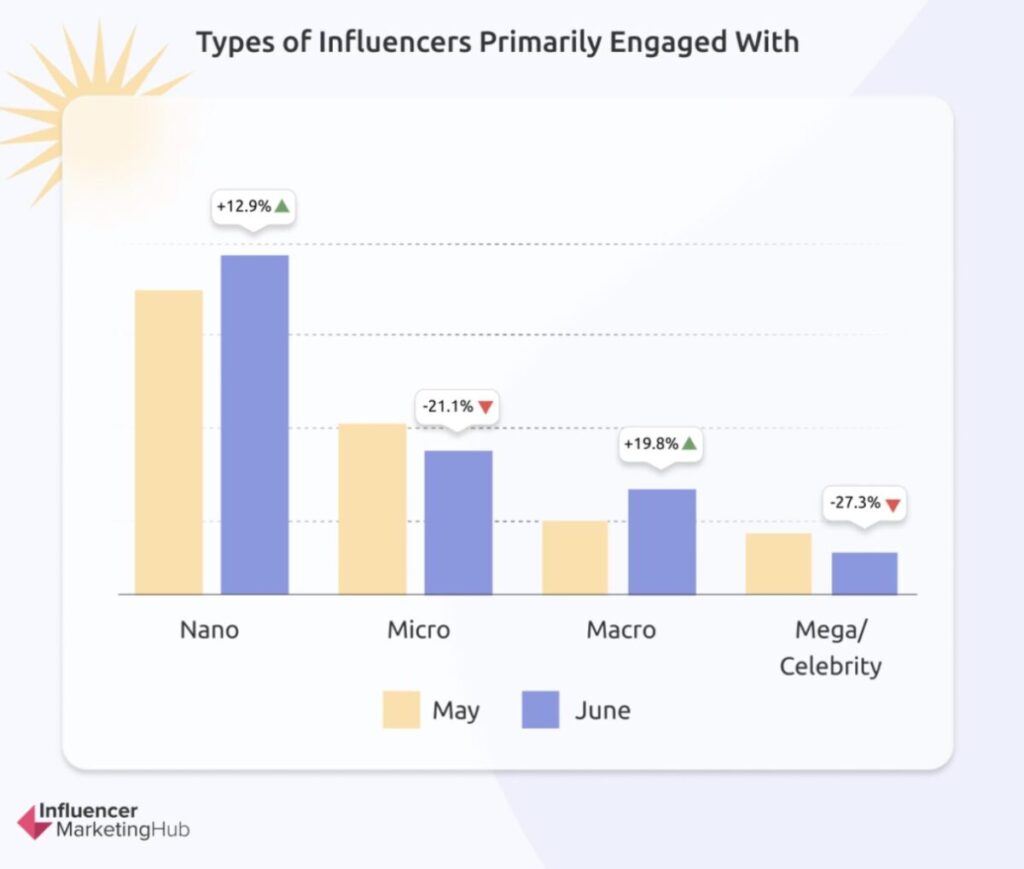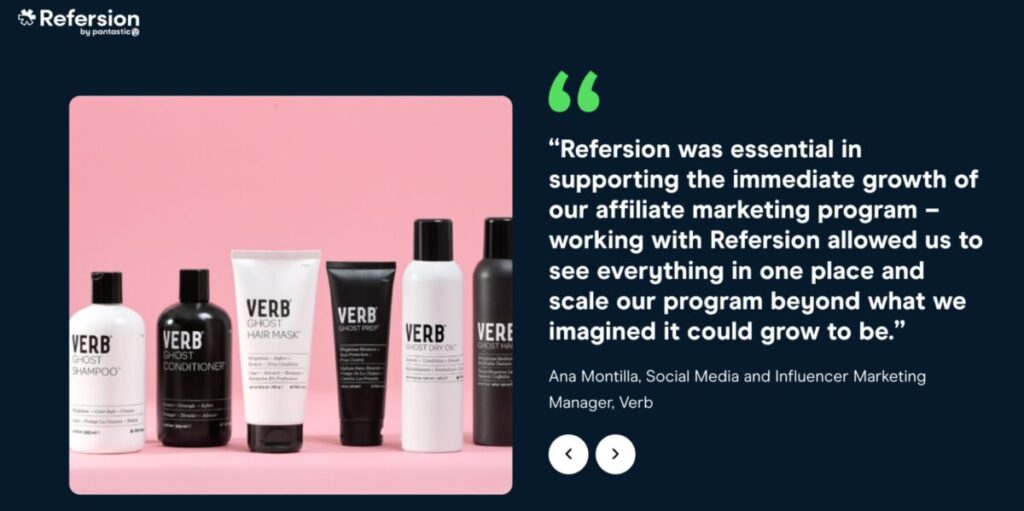The fact that there are several marketplaces for eCommerce brands and sellers available simplifies the process of starting and managing an eCommerce business. However, growing it into a sustainable venture is the bigger challenge.
Personalization, convenience, and competitive pricing are three of the key driving forces behind the growth of the eCommerce market. By focusing on these areas in particular, you can set up your brand for sustained growth. Here’s an exploration of proven strategies to increase your revenue.
Top eCommerce Growth Strategies to Try in 2024
1. Optimize for search engines
Search engine optimization (SEO) is also relevant to eCommerce managers selling on marketplaces like Amazon. In fact, Jungle Scout’s Consumer Trends Report Q2 2024 found that the majority (52%) of consumers start their product search on Amazon, making Amazon SEO even more critical.
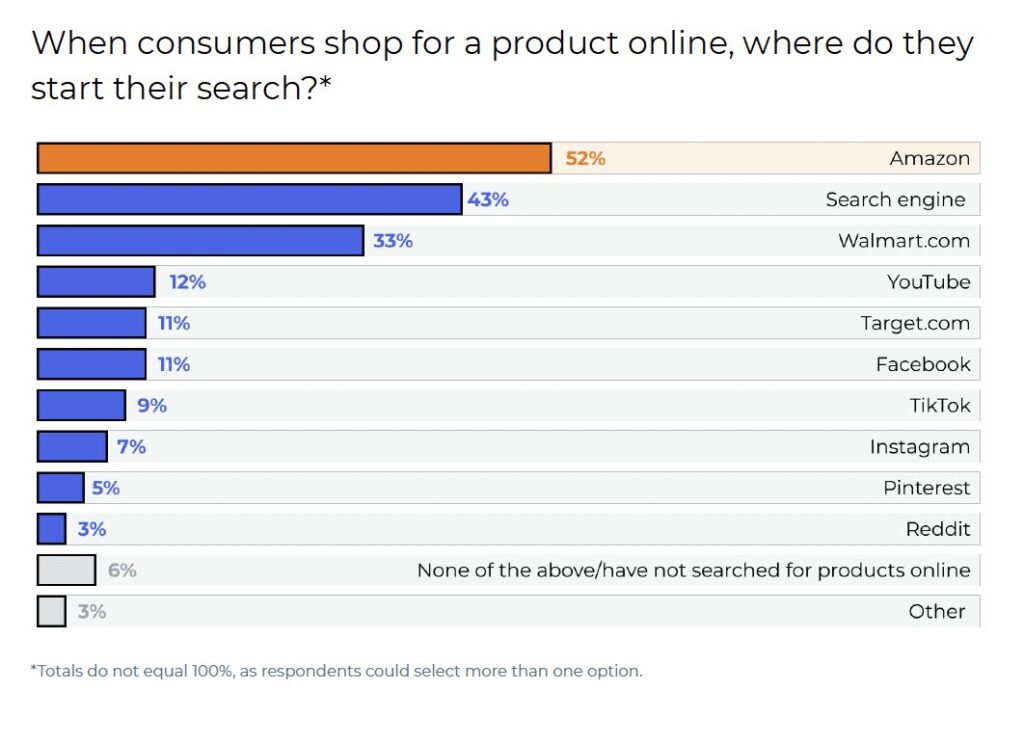
Source: junglescout.com
Here’s Amazon’s SEO recommendations for improving brand and product visibility:
- Write your product listing from your target audience’s point of view
- Use a combination of short-tail and long-tail keywords
- Upload a variety of high-quality product images from different angles that show the key features
- Include one to two keywords when adding alternative text (alt text) to your product images
- Adjust your prices regularly to stay competitive
- Add keywords to your product’s catalog data via your Amazon Seller Central account
- Use bullet points to highlight the most important product details
For example, when you write your product title:
- Incorporate primary keywords
- Highlight the brand name and product type
- Include descriptive information like size, color, or gender
- Limit your product titles to 60 characters
Here’s an example of what it will look like in practice:

Source: amazon.com
This title includes the brand name (Crocs), product type (classic clogs), and descriptive details like size (adult) and gender (unisex). Considering the character limit, it probably didn’t have to mention “women and men” again as it already states it’s unisex.
Then, when you write your product description:
- Incorporate secondary keywords
- Focus on the features and benefits
- Keep your writing natural
- Instead of using the same key phrase multiple times, use a variation instead (for example, use women and men instead of unisex)
Here’s how Crocs describes their product:
When listing a feature, they link it to how it benefits customers. For example, pivoting heel straps mean that it will fit more securely while ventilation ports improve breathability.
2. Run paid ads
SEO is essential, but it takes time. Running paid ads can generate quick growth on which you can build. Beginner eCommerce businesses in particular should consider investing in paid ads as it can quickly improve their visibility.
All the main eCommerce marketplaces like Amazon, eBay and Etsy make it easy to leverage paid ads. For example, Amazon offers various ad types that you can experiment with. You can use its cost-per-click ads if you need more control over your campaign budget.
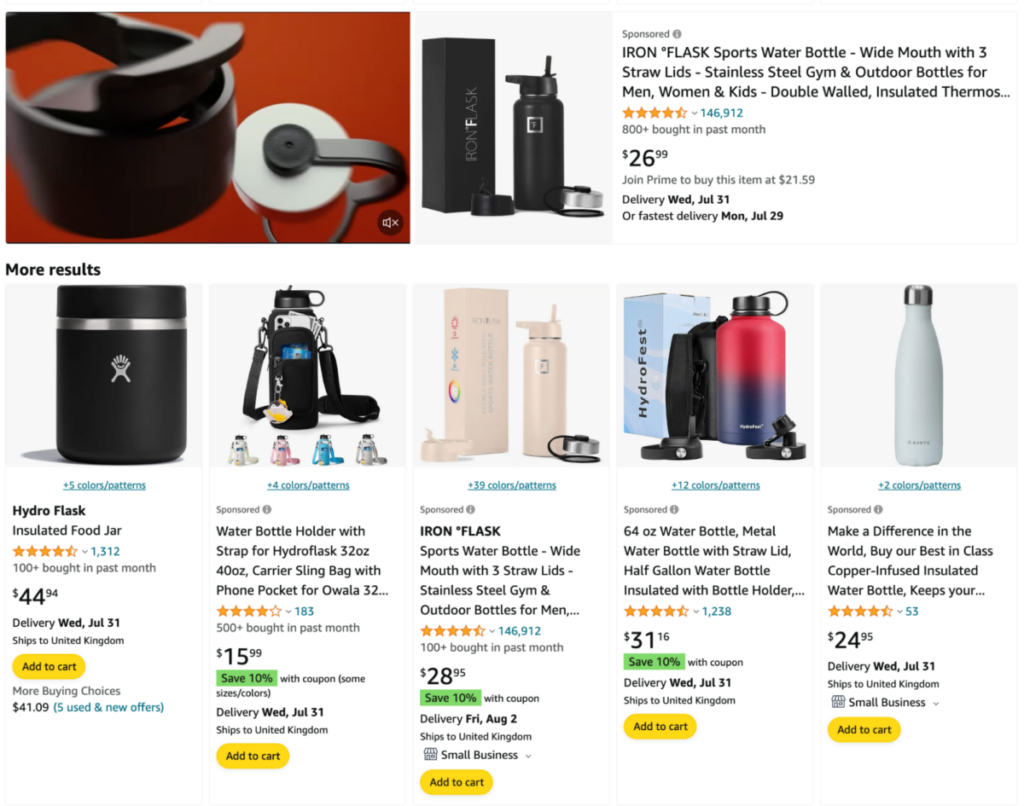
Source: amazon.com
For brands with bigger ad spending power, there’s Amazon Demand-side Platform (Amazon DSP). It uses automated buying and selling of ad spaces on various websites like Audible, helping you to extend your reach beyond the marketplace.
To optimize your bidding strategies, it’s best to use a tool. If you specifically want to leverage Amazon PPC ads, you can check out tools like:
For example, a tool like Helium 10 shares suggested PPC bids for keyword phrases, helping you to create, manage, and optimize your ad campaigns. It has helped a brand like Nature’s Pure Edge to prioritize growth by controlling their ad spend better. The result — ad spend decreased by 21%.
A tool like Helium 10 also assigns a customer success manager as part of onboarding. However, if you need more human help, there’s also the option of working with one of the digital marketing agencies that specialize in eCommerce PPC. You can, for example, reach out to:
3. Use dropshipping
Inventory management is one of the biggest challenges that eCommerce managers face. Growing businesses in particular can benefit from using dropshipping as a business model.
With this eCommerce retail model, you’ll never have to buy and store any stock. You’re essentially a middleman. Once a customer buys a product, the third-party supplier (that’s invisible to the customer) will ship the product directly to the customer.

Source: shopify.com
The advantage of this approach is that you only have to focus on running your eCommerce store, marketing products, and customer service. The fact that a third party is responsible for stocking and shipping frees up considerable time that you can dedicate to growing your business.
It also frees up capital. As you only pay once you receive an order, you have more cash flow to dedicate to growth-generating activities like marketing.
While you’ll have significantly fewer inventory hassles, you still need to ensure that your supplier has stock. Shopify recommends that you use multiple dropshipping suppliers that stock more or less the same products. This way, if one supplier runs out of stock, you have a backup plan.
As such, it’s also important that you pick the right products to dropship. Aside from the profit margin, consider availability. Selling products that are stocked by numerous suppliers will prevent potential logistical issues down the line.
Other practical tips Shopify shares include:
- Take the responsibility when a supplier makes a mistake (after all, the supplier is invisible to consumers)
- Find an alternative dropshipping supplier, if your current one regularly makes errors
- Take your average shipping fee and set that as a flat-rate that you charge for all orders
- Combine FAQ pages and helpdesk software to streamline customer support
4. Be more social with social commerce
In 2023, social commerce generated an estimated revenue of $571 billion. With an expected compound annual growth rate (CAGR) of 13.7%, it’s forecasted nearly to double in the next five years, opening another channel that eCommerce businesses can use to grow their sales.
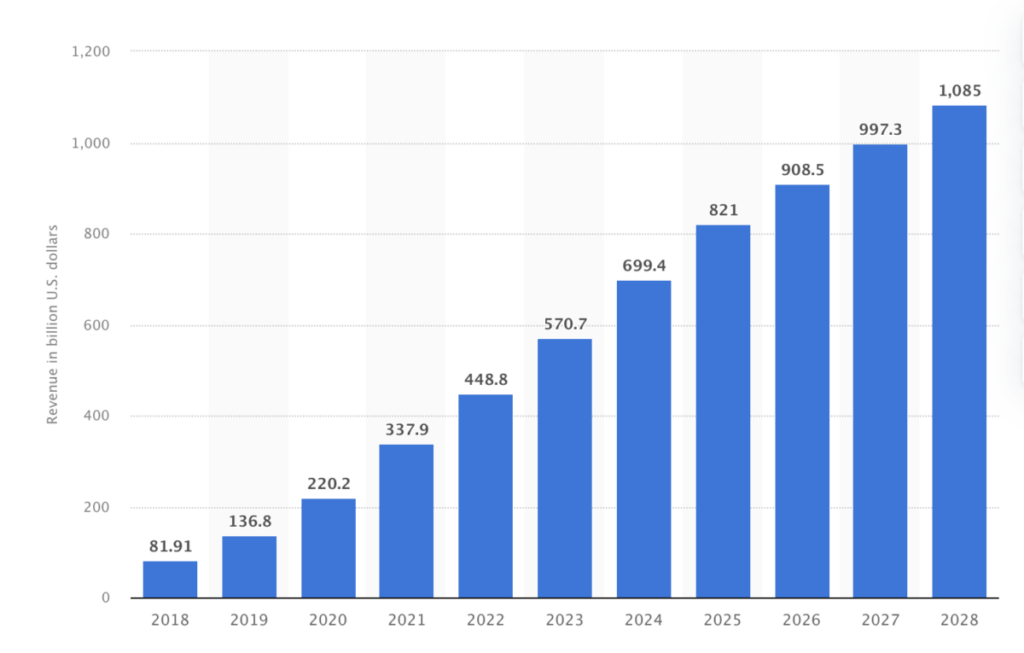
Source: statista.com
Basically, social commerce refers to when you sell products directly on social media platforms. Instead of relying solely on eCommerce marketplaces, explore if you can also use other platforms like:
- TikTok
It can be especially effective if you’re mainly targeting Generation Z and millennials. More than half of consumers in these age groups are likely to buy a product directly from social media, with Instagram and Facebook the preferred platforms for Gen Z and millennials respectively.
Livestreams and social commerce complement each other very well. It adds that element of interactivity that makes it easier to build trust. You can, for example, use it to host:
- Ask Me Anything sessions (AMAs)
- Product demonstrations
- New product launches
- Product reviews
As it’s the interactive nature that makes it appealing, you need to find an engaging host. It needs to be someone who comes across as authentic, enthusiastic, and entertaining.
5. Incorporate virtual/augmented reality
Our Digital Marketing Benchmark Report 2024 found that a third of companies are planning to adopt augmented reality (AR) or virtual reality (VR) tools in the next 2-3 years. It’s still relatively uncharted territory and it could give you an upper hand over your competitors, if you manage to incorporate in the next year or two.
What makes VR/AR such a valuable tool for eCommerce businesses is that it helps to bridge the gap between in-person and online shopping. For all its convenience, online shopping still lacks one key feature — the ability to get an accurate idea of product size, color, and quality. AR and VR can change that and bring online stores closer to brick-and-mortar locations, helping to create a more immersive customer experience.
In fact, according to Amazon’s statistics, customers who viewed a product with a 3D model or tried it on virtually were twice as likely to buy it. For example, on Amazon you can use the:
- Virtually Try-On (for eyewear or shoes)
- View in 3D option that lets customers see products from all sides
- View in Your Room option that lets customers see it in their own space
6. Encourage customer reviews
According to stats published by Statista Research Department, high-quality reviews is the main form of user-generated content (UGC) that impacts consumers’ purchasing decisions across the world. About 1 in 5 consumers admit that they were influenced by them.
Whether or not a customer leaves a product review isn’t entirely out of your control. There’s nothing wrong with asking buyers directly to write one. This is one reason why it’s crucial to build an email list.
Bellroy, an Australian accessories brand, is a great example of how to use email sequences to generate more customer reviews.
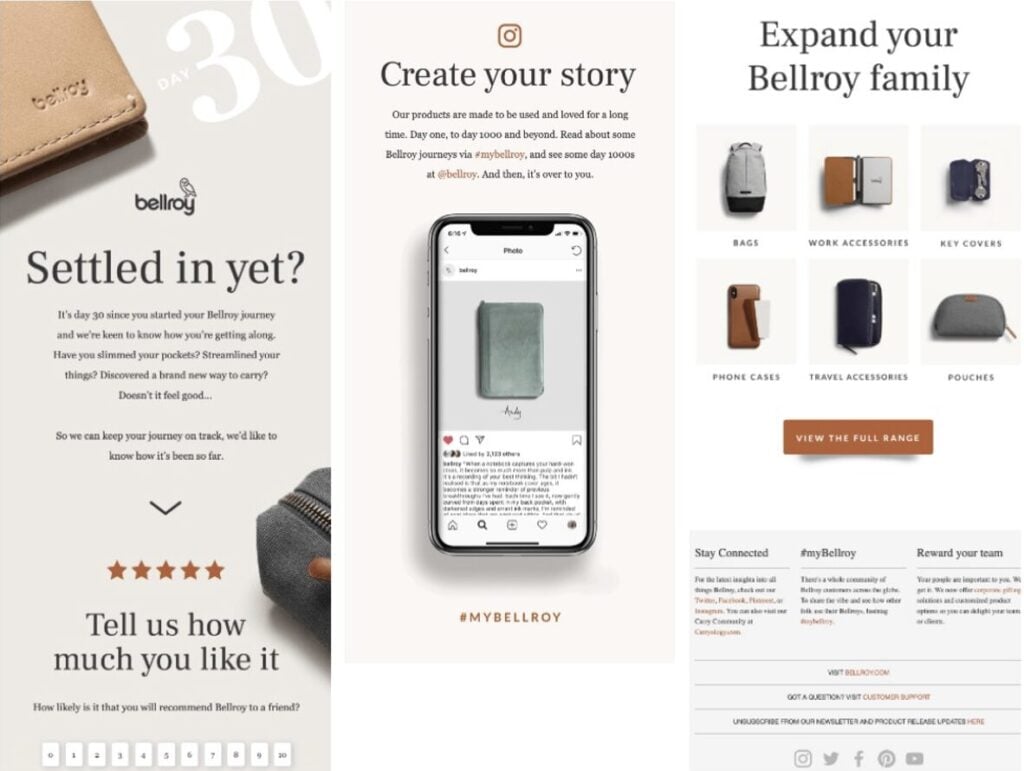
Source: reallygoodemails.com
Thirty days after a customer has bought one of their products, they send a follow-up email asking them to rate the product. They also use this email as an opportunity to encourage them to share their experience on social media using the branded hashtag #mybellroy, read about others’ experiences, and recommend other products in their range to buy next.
For example, if you’re selling on Amazon, you also have tools like Amazon’s “Request a Review” button and the Amazon Vine Program. With the latter, you’ll send free inventory to reviewers part of their Vine program who’ll try it out and write a review.
The goal isn’t to get perfect scores all the time. In fact, it could count against you.
Layla Hakamiun, freelance marketing strategy consultant at the fwrd group, a boutique consulting firm that accelerates business growth for brands selling consumer goods, recommends in a LinkedIn post that the sweet spot is 4.6-star ratings.
Her advice:
“If you use your reviews properly (even the negative ones), you can gain so much insight into what your consumers think about products and even give you ideas for product detail pages copy updates and future innovation!”
7. Experiment with influencer marketing
Our list of eCommerce growth strategies won’t be complete without mentioning influencer marketing. After all, that’s what makes us tick.
The influencer marketing industry is still evolving at incredible speed, as per our latest Influencer Marketing Benchmark Report for June 2024. Insights from 399 marketing professionals reveal that:
- 84.3% find it extremely effective month-over-month (MoM)
- Nano-influencers are preferred
- There’s a move towards performance-driven campaigns
- Long-form video content shared on YouTube is becoming more important
The long and the short of it: work with influencers with fewer than 10,000 followers on Instagram, TikTok, and YouTube.
For better results, these nano influencers should already love your brand. This is because:
- They’re more likely to work with you (according to Upfluence data influencers are twice more likely to work with brands they already purchased from)
- Their content will be more authentic (and brand positive)
- Their followers will likely be very similar to your target audience
- They know your products well
- They’re more likely to accept free products as payment
You can, for example, use a tool like Upfluence to identify your most influential customers. It integrates with eCommerce sites and uses a pop-up to gather customer data to calculate engagement rate and follower count.
For example, the cosmetic company BeautyLab, used Upfluence’s search and filtering capabilities to identify 160,000 influential customers that could serve as brand ambassadors. Of the 160,000, about 10% were identified as content creators who could create posts that would generate brand awareness.
BeautyLab also used Upfluence’s Shopify store integration allowing influencers to pick products in real-time from their store’s Shopify inventory.
This influencer marketing campaign ran for 6 months and after the first 3 months they already enjoyed a positive return on investment (ROI). They earned $19 for every dollar spent adding up to $1.4 million sales in only 6 months.
8. Start an affiliate marketing program
While similar to influencer marketing, affiliate marketing only rewards an affiliate for actual conversions. This makes it a good alternative for online businesses that want to focus more on growing sales than brand awareness.
Aside from the lower risk, it’s also straightforward to launch your own program. Here’s how you can launch an affiliate program for your eCommerce business:
- Check if any competitors are using affiliate marketing and, if so, find out which network commission rates they use
- Decide on which metrics you want to track and reward
- Join an affiliate network where you can find affiliates in your niche who attract substantial traffic to their social profiles and post content that matches your tone and values
- Create guidelines about your branding and top-selling products
- Use an affiliate marketing tool to monitor affiliates’ performance
You can, for example, check out a tool like Refersion. Best for medium to large eCommerce brands, it integrates with various eCommerce platforms like Amazon, Shopify, WooCommerce and BigCommerce.
9. Focus on increasing the average order value (AOV)
eCommerce businesses with higher average order values (the average amount that a customer spends every time that they place an order) have more financial freedom. This makes it easier for them to shift more resources to growing their customer base.
Shopify suggests the following ways to increase your AOV:
- Offer free shipping for orders that exceed a minimum value
- Create packages
- Leverage cross-selling and/or upselling
- Create a loyalty program
- Offer live chat support to answer questions immediately
Key Takeaways
Much like in real life, the secret is to look for things in your past that can still serve you well in the future. That’s when real growth happens.
In terms of growing an eCommerce business, it’s not always about introducing new channels and winning new customers. Customer retention should be a priority. If all your attention goes towards wooing new customers, marketing will become an unsustainable expense.
Use a combination of traditional strategies like SEO and follow-up emails with newer eCommerce trends like AR and VR.
Then, see if strategies like dropshipping will make sense for your online business and find ways that you can increase the average order value. This way, you free up time and resources that you can dedicate to growth-generating activities.
Frequently Asked Questions
How do you grow an eCommerce business?
There are many steps to growing an online business. First, you’ll need to have clarity on who you’re trying to target. This will help you to build a loyal customer base. Once you have won customers, focus on how you can encourage repeat business and increase the average order value by for example using upselling and cross-selling.
How can you boost your eCommerce sales?
There are several proven ways to increase your online sales. Here are some top tips to try:
- Optimize the layout of your online store, checkout process and ensure that your site is also optimized for mobile devices
- Implement SEO best practices to grow organic website traffic
- Encourage customers to leave product reviews and share these on your website and social media networks
- Introduce a loyalty rewards program to boost customer retention
- Actively try to reduce your cart abandonment rate by, for example, sending out email reminders
Which digital marketing agencies specialize in eCommerce marketing?
There are dozens of reputable digital marketing agencies that serve eCommerce brands. You can, for example, check out:
- Disruptive Advertising
- Groove Commerce
- Logical Position
- Thrive Internet Marketing Agency
- Plum Tree Group
- Single Grain
- 1Digital Agency
- Lounge Lizard
- NP Digital
- Kobe Digital
Which tools can you use to help you grow your eCommerce business?
The following are 10 of the top tools for eCommerce marketing:
- Omnisend
- Mailchimp
- Semrush
- Canva
- Referral Candy
- Hotjar
- Buffer
- Brandwatch Social Media Management
- Google Analytics
- AdEspresso
Which tactics should you include in your eCommerce growth strategy?
Here are top tactics that eCommerce business can use in their growth strategies:
- Optimizing your website for conversion by ensuring it’s mobile-friendly
- Using SEO by optimizing product pages for specific keywords
- Leveraging email marketing to send cart abandonment reminders and educational content
- Creating a customer loyalty program
